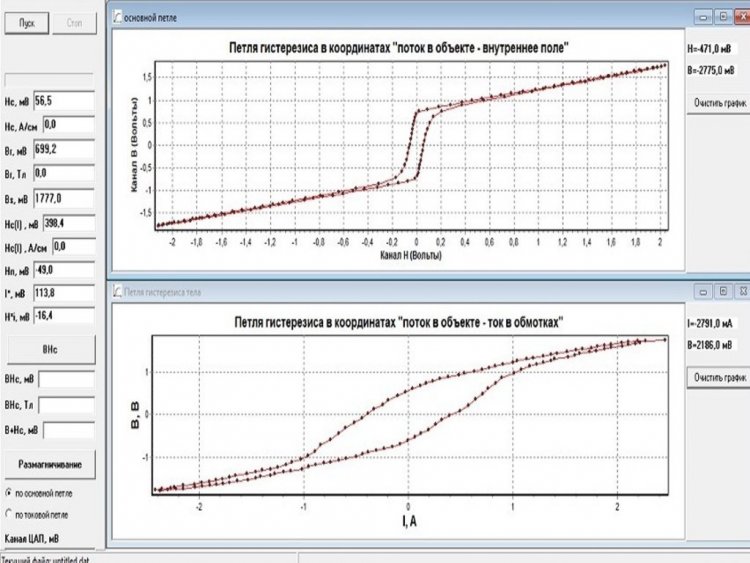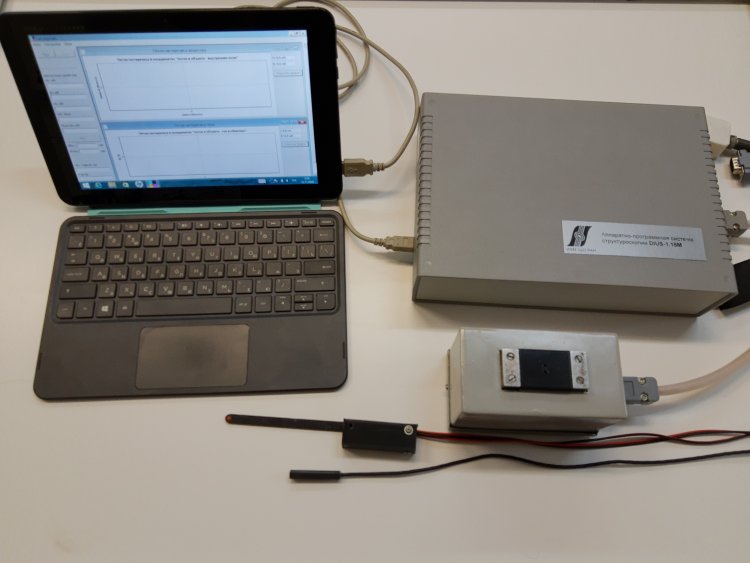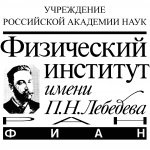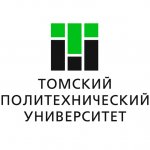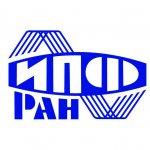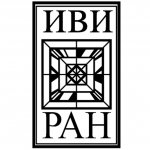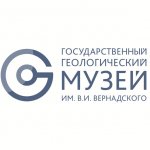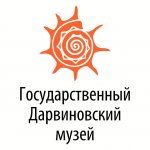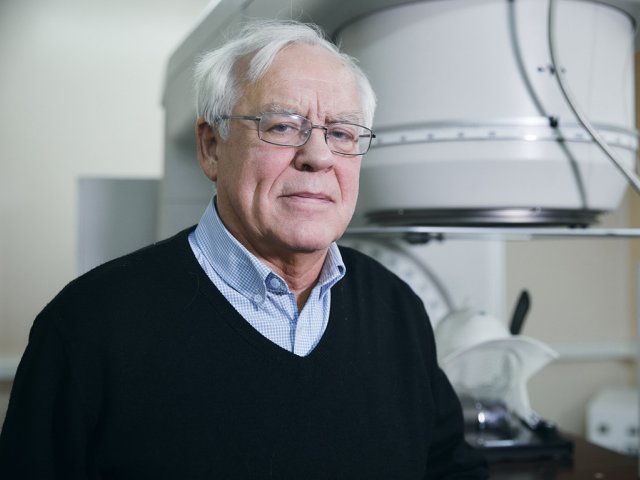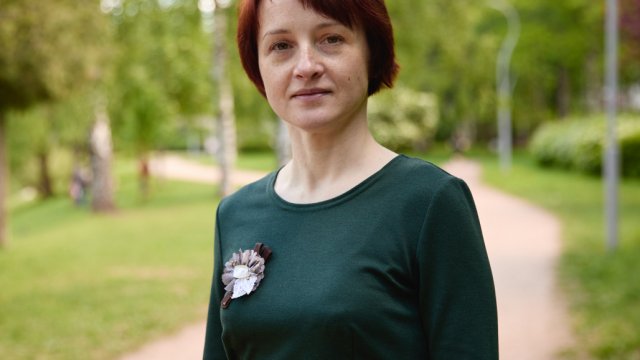Ural scientists have developed a unique mobile portable hardware and software system that will allow assessing the quality of a product made of ferromagnetic materials for strength and deformation level
Figure 1. Magnetic hysteresis loops of two steels of different chemical composition. Source: Kostin V.N. Electromagnetic control. Educational publication – Ural Federal University named after the First President of Russia B.N. Yeltsin, M.N. Mikheev Institute of Metal Physics of the Ural Branch of the Russian Academy of Sciences, Ural Branch of the Russian Academy of Sciences, Yekaterinburg, 2016
There are various kinds of hardware and software monitoring and diagnostic systems used to determine many types of deformation and the level of loads on mechanisms and structures. The search for a new technical solution, taking into account the multiparameter approach in such systems, can provide an opportunity for a high degree of reliability of diagnostics and identification of interfering factors. Therefore, for example, in the field of magnetic structurescopy, experts are looking for promising methods of analyzing elastic and plastic deformations to prevent the destruction of objects.
The result of many years of work by specialists of the M.N. Mikheev Institute of Metal Physics of the Ural Branch of the Russian Academy of Sciences (IMP UB RAS) was the development of a multi-purpose portable diagnostic system DIUS-1.15M with a set of converters, which allows solving a wide range of problems of magnetic structurescopy for ferromagnetic products. By identifying the characteristics and advantages of the methods of operation of such systems, IMP scientists have proposed an original model and special software that will perform the functions of a mobile expert system and will also find applications in various fields of industry.
Vladimir Nikolaevich Kostin – Doctor of Technical Sciences, Associate Professor, Deputy Scientific Director of the IMP of the Ural Branch of the Russian Academy of Sciences, Chief Researcher and Head of the Laboratory of Integrated Control Methods of the M.N. Mikheev Institute of Metal Physics of the Ural Branch of the Russian Academy of Sciences (Yekaterinburg), Professor of the Department of Physical Techniques and Devices for Quality Control of the Ural Federal University (Yekaterinburg), Editor-in-Chief of Defectoscopy Journal of the Russian Academy of Sciences – told us about the principle of operation and novelty of the DIUS-1.15 portable hardware and software system and its potential possibilities.
“Nondestructive testing (NDT) and technical diagnostics (TD) have already become integral elements of modern industry. Nondestructive testing is most in-demand in such industries as space and aircraft construction, railway transport, mechanical engineering, automotive, oil and gas industry, enterprises of the military-industrial complex. The need for technical diagnostics is due to increased loads on mechanisms and structures, as well as degradation of materials under the influence of factors such as corrosion, local plastic deformations, static and variable elastic stresses, temperature changes. The widespread use and continuous improvement of methods and means of NDT and TD allow to improve the quality of products, reduce the risks of man-made accidents, assess the remaining resource, and extend the safe operation of products and facilities.
Electromagnetic control (EMC) refers to the most popular types of NDT and so on. It is based on the existing interrelations of magnetic (see Fig. 1) and electrical parameters of controlled objects, on the one hand, and various performance characteristics of materials (hardness, strength, composition, etc.), on the other hand. The methods and measuring instruments of EMC are constantly being improved. Hundreds of different devices are produced. However, until recently, all devices had a narrow specialization (coercitimeter, magnetic permeability meter, etc.) and solved a very limited range of tasks. In many cases, to diagnose a specific product, for example, a car crankshaft, it was necessary to develop and manufacture a special device that could not be used for other tasks. The possibilities of one-parameter magnetic structurescopy, i.e., the determination of the strength properties or chemical composition of products by any given magnetic parameter have been exhausted,” Vladimir Kostin explained what caused the need to develop new promising multi-purpose mobile hardware and software systems.
What are they intended for and what specific tasks do they perform?
“The need to measure two or more parameters for reliable diagnostics of ferromagnetic steels and alloys is due to two reasons. The first reason is methodical when several of its magnetic and electrical parameters need to be determined to assess the condition of the product. For example, to assess the quality of hardening of ball bearings, it is necessary to measure both the coercive force, which shows the hardness value and the saturation magnetization, which shows the amount of residual austenite dangerous for operation in steel. The second reason is measuring, when for reliable measurement of the required control parameter, knowledge of two or more electromagnetic quantities characterizing both the object of control and the measurement conditions is required. For example, our team obtained a patent for a method of measuring coercive force, in which, to reduce the influence of interfering factors, the magnitude of the magnetic flux in the measuring circuit is additionally measured.
A method for local measurement of the coercive force of an object in a compound chain with a gap, patent No. 2483301, V.N.Kostin, O.N.Vasilenko; Bul. dated 27.05.2013. Provided by V. Kostin
Recently, complex methods of monitoring and diagnostics involving the use of several parameters of different physical nature have been increasingly used. For example, the magnetic detection of places of concentration of dangerous stresses in objects made of ferromagnetic steels entails the need to search for cracks in these places, making it advisable to employ the eddy current method. Another argument in favor of the use of complex methods is that comparing the results of determining the same controlled parameter by different methods makes it possible to increase the reliability of detecting product defects.
Thus, there is a need to create such diagnostic tools that can measure a whole range of diagnostic parameters, performing the functions of a “mini-lab.” Such developments are possible based on new information about the interrelationships of functional (hardness, strength, corrosion resistance, etc.) and electromagnetic characteristics of materials, the use of digital technologies for generating and analyzing signals, achievements of modern electronics,” the scientist explained in detail.
What criteria should they meet?
“Promising multi-purpose software and hardware electromagnetic control systems must meet the following several criteria: the possibility of controlled exposure to the object of control by a constant or alternating magnetic field; multivariance, i.e. the ability to measure several diagnostic parameters with one device (parameters of the magnetic hysteresis loop, the intensity of a constant or alternating magnetic field, etc.); digital technologies for generating electromagnetic fields and processing measuring information, which will make it easy to adapt monitoring and diagnostic algorithms to certain objects and control conditions, as well as to the requirements of a specific user; mobility, i.e. powered by autonomous power sources, minimizing the size and weight of devices, protection from adverse external influences; the possibility of multi-purpose use, i.e. the possibility of changing the methodology and object of diagnostics by changing the connected measuring transducers and launching the appropriate control program (for example, a cell phone can also be used for various purposes – calls, watches, reading books and watching movies, a compass, an atmospheric pressure sensor, etc.); an acceptable cost for a wide range of users, which is very important in a market economy,” the researcher specified in detail.
Vladimir Kostin researches the development of the DIUS-1.15M mobile portable hardware and software system. The main members of the working group include Candidate of Technical Sciences Olga Nikolaevna Vasilenko (study of the interrelationships of magnetic properties and operational characteristics of materials and products), graduate student Danila Grigorievich Ksenofontov (development of measuring transducers, development of new software), Junior Researcher Alexander Viktorovich Byzov (computer modeling of magnetizing devices, development of diagnostic techniques for various products). Certain types of work are performed by employees and engineers of the laboratories of intelligent diagnostic technologies and magnetic structural analysis of the IMP. Students of the Department of Physical Techniques and Devices for Quality Control of the Ural Federal University were also involved in the study.
The development of Ural scientists is the result of 40 years of research conducted in the Department of Non-Destructive Testing of the M.N. Mikheev Institute of Metal Physics of the Ural Branch of the Russian Academy of Sciences. On dozens of grades of steels and alloys, specialists investigated the dependences of the electromagnetic properties of materials on various modes of heat treatment (quenching, tempering, annealing), from the magnitude of cold plastic deformation to the depth and hardness of surface-hardened layers on steel products. The work carried out has shown the need for multiparameter electromagnetic diagnostics of materials.
DIUS-1.15, the portable hardware and software system proposed by the IMP UB RAS team, consists of a measuring unit, an auxiliary converter with which the magnetization of controlled objects and measurement of their properties is performed, as well as a tablet computer, the program of which controls the entire measurement cycle (see Fig. 2).
According to Vladimir Kostin, “if there is a correlation between the controlled parameters and the magnetic properties measured by the device, the device allows you to control the quality of volumetric and surface thermal treatments, assess the level of plastic and elastic deformations, determine the strength properties of products and objects made of ferromagnetic materials, determine the amount of residual austenite in hardened steels and solve other problems of magnetic structurescopy.
The DEUS-1.15M APS device has an autonomous power supply and can be used for diagnostics of objects in the field. The software of the device has algorithms for compensating factors interfering with magnetic measurements.”
Figure 2. General view of the mobile portable hardware and software system DIUS-1.15M. Photo provided by V. Kostin
What specific tasks of magnetic structurescopy of ferromagnetic products will your system allow you to solve and for what scientific purposes?
“The use of a multi-channel ADC-DAC converter and a full-fledged computer as part of the device allows to implement a wide variety of digital methods for generating and analyzing signals, quickly change measurement schemes and algorithms for processing results, process and store large arrays of heterogeneous information. Thus, our device meets all the above requirements for promising multi-purpose hardware and software systems. One DIUS-1.15M hardware and software system is capable of replacing devices in factory laboratories such as a coercitimeter, a magnetic permeability meter, a differential magnetic structurescope, a magnetic thickness gauge,” Vladimir Kostin said.
The main obstacle to measurements, as the scientist emphasizes, is an “uncontrolled gap between the surface of the object and the poles of the transducer, which may appear due to the curvature of the object’s surface or the distortion of the transducer when it is installed on the object. To eliminate the influence of this factor, three additional parameters are measured, which makes it possible to compensate for the effect of the gap.” (See Fig. 3)
.
Figure 3. Diagram of the auxiliary measuring converter. The converter consists of a U-shaped magnetic core (a) with two magnetizing windings (c) and a hole-converter, (b) the shape of which converts the magnitude of the magnetic flux into the magnetic field strength. Therefore, with the help of two similar magnetic field sensors, we measure the magnetic hysteresis loops of the monitored objects. Source: Mobile hardware and software system of magnetic structurescopy DEUS-1.15M [Text] / V.N. Kostin, O.N. Vasilenko, A.V. Byzov // Flaw detection. — 2018. — V. . — P. 47—53.
A specialized control program operates as part of the system, which, according to the Ural researcher, “generates signals that turn into an electric current through a digital-analog conversion channel, which is transmitted to a magnetizing device and, according to a given program, remagnetizes the object of control. From the measuring transducers, which are magnetic Hall sensors, signals about the magnetic properties of the object are transmitted to a multichannel analog-to-digital converter, converted into a digital code, and processed, giving information about the magnetic properties of the object in digital and graphical form (see Fig. 3 and Fig.4).
Figure 4. The program interface for measuring hysteresis loops of matter (independent of the size and shape of the object) and “body” (depending on the shape of the object and the properties of the measuring circuit). Provided by V. Kostin
“To calibrate our system using the magnetic induction channel, we have developed and manufactured a set of reference samples with different values of residual magnetization, and to calibrate the field channel, we use a set of standard coercive force samples. Both sets are certified using the REMAGRAPH C – 500 measuring complex manufactured by Magnet-Physik Dr. Steingroever GmbH, Germany,” the scientist commented.
Vladimir Kostin pays special attention: “The DIUS-1.21M hardware and software system is unmatched in the world. All intellectual property rights belong to the M.N. Mikheev Institute of Metal Physics of the Ural Branch of the Russian Academy of Sciences. The development is protected by the RF patent RU 2483301, the registration certificate of the computer program 2020614584 Hysteresis 1.15M, and several technological secrets.”
How do you assess the capabilities of the DIUS-1.15M portable hardware and software system? Are there interested parties/supporters of your development for implementation in factories or industrial enterprises?
“Two control programs and two sets of measuring transducers have already been developed for the DIUS hardware and software system. Our device can be used as a magnetic structurescope measuring all magnetic properties of products made of ferromagnetic materials, as well as a magnetometer, that is, as a device for measuring magnetic fields in space (see Fig. 5). Currently, we are developing special sensors and a program for solving a wide range of eddy current monitoring tasks using our hardware and software system, primarily for detecting cracks in metal objects made of both magnetic and non-magnetic alloys.
Potential users of our device are enterprises of mechanical engineering and metalworking, ferrous metallurgy, pipe production, pipeline transport, automotive, and other industries. To date, the APS DIUS-1.15M has been implemented at two of the largest enterprises of the Urals, JSC Research and Production Corporation UralVagonZavod and EVRAZ NTMK. In addition, our device was purchased and used for scientific research at the Tyumen Industrial University,” Vladimir Kostin notes the relevance and effectiveness of the device developed by the staff of the IMP Ural Branch of the Russian Academy of Sciences.
Figure 5. Multi-purpose portable magnetic diagnostic system with a set of converters. Photo provided by V. Kostin
So, the portable diagnostic system proposed by Ural scientists is an effective alternative option that allows measuring and monitoring the physical and mechanical properties of products made of ferromagnetic steel.
illustrations provided by V. Kostin
Farberovich Olesya

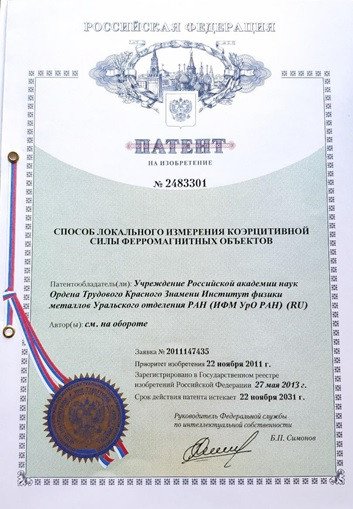
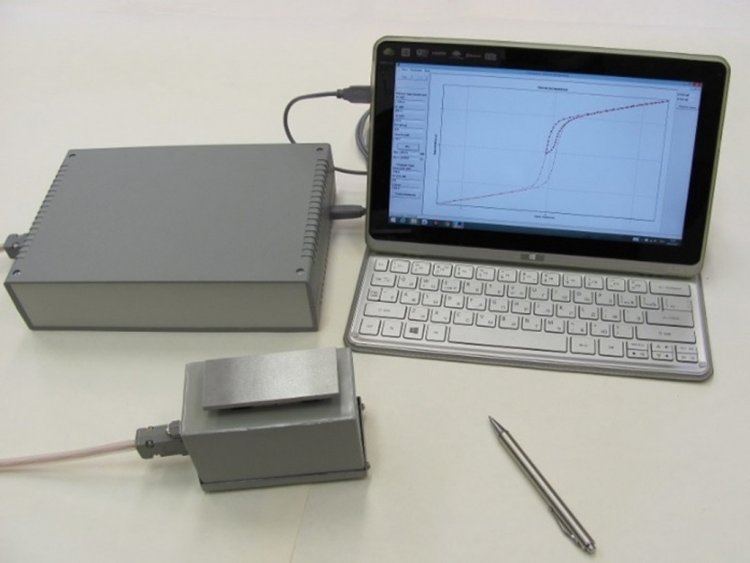
![Figure 3. Diagram of the auxiliary measuring converter. The converter consists of a U-shaped magnetic core (a) with two magnetizing windings (c) and a hole-converter, (b) the shape of which converts the magnitude of the magnetic flux into the magnetic field strength. Therefore, with the help of two similar magnetic field sensors, we measure the magnetic hysteresis loops of the monitored objects. Source: Mobile hardware and software system of magnetic structurescopy DEUS-1.15M [Text] / V.N. Kostin, O.N. Vasilenko, A.V. Byzov // Flaw detection. — 2018. — V. . — P. 47—53.](/images/h/29wh-large.jpg)
